Chins Are The New Cheeks: Why Chin-Enhancing Options Are Trending
The chin, a crowning glory on the tip of Brad Pitt and Idris Elba’s chiseled jawbone, has long been a measure of strength, masculinity and attractiveness. But, a welldefined jawline isn’t just the cornerstone of a physically blessed male face; it’s also an area of growing aesthetic interest for women, too. Today, genioplasty, or chin enhancement, is trending, and in 2018, The Aesthetic Society reported a 20 percent jump in popularity for chin augmentations. Whether adding or taking away volume from the chin—the lower face is now getting as much attention as the cheeks.
Balance + Proportion
According to Westborough, MA facial plastic surgeon Min Ahn, MD, while chins may be in vogue, they have always been a major focal point for aesthetic doctors when addressing other features like the eyes, nose and lips. “This relates to facial balance,” he explains. “Balance is critical to facial aesthetics. If you split the face into thirds horizontally, you’re going to want balance in those three areas. When I perform a rhinoplasty, if the nose is big in the middle third, but the lower third is weak, then the eye will immediately go to that middle area. If the chin is stronger, then we see the eyes pop because the middle and lower third are no longer drawing attention away from the upper third of the face.”
New York facial plastic surgeon John Kang, MD uses “the vase analogy” with his patients: “No matter how beautiful the vase is, it is the base that provides stability and strength. No one really pays attention to the base, but if it is lacking, you would know something is missing.”
The Ideal Face Shape
A study published in the Aesthetic Surgery Journal by Temple University School of Medicine in Philadelphia deciphered that the most “mathematically beautiful” face had ideal facial contours, dimensions and ratios that create a harmonious, balanced and attractive face based on viewer perception. A heart-shaped face—think Halle Berry and Reese Witherspoon— with cheeks as wide as the eyebrows, a narrow jawline and a slightly pointy, protruding chin was seen as most desirable. New York facial plastic surgeon Konstantin Vasyukevich, MD notes, “It’s not just a matter of adding volume to the chin, but we must also address the jawline and any excess fullness that may make the lower face appear wider, and subsequently weaker.”
Nonsurgical Facial Sculpting
Jowling is minimal sagging skin around the jawline, and can be treated by strategically adding volume with filler (off-label) or fat transfer to create a more chiseled, youthful look when there is volume deficiency. “Filler in the chin can add a few millimeters of length, which, along with a slender jawline, can reshape the face,” explains Dr. Vasyukevich.
Dr. Ahn likes to use longer-lasting hyaluronic acid fillers such as Restylane Lyft and Juvéderm Voluma, which recently became the first filler to ever be FDA-approved for the chin area. “They have more density, provide more projection and last at least a year,” he says.
Beverly Hills, CA plastic surgeon Andrew Ordon, MD favors collagen-stimulating fillers or fat transfer for the chin. “To add projection and volume, I inject either fat or Radiesse, a filler made of calcium hydroxylapatite, which is found naturally in our bones and joints.”
Neurotoxins like Botox Cosmetic, Dysport and Xeomin can also be used to create a more narrow jawline. “When we inject the masseter muscles (off-label), it results in a more slenderlooking jawline because those muscles will now be at rest,” Dr. Vasyukevich says. “This is commonly used for teeth grinders or TMJ.”
Fat Transfer
This technique involves removing fat from one area of the body via liposuction and injecting it into the chin. Surgeons consider fat transfer one of the safest recontouring methods because the filler is from the patient’s own body. However, Dr. Ahn says fat is not always the first choice for chins: “Fat is not a solid material and a portion of it absorbs over time. Also, if you don’t like the result you cannot remove it, unlike an implant or hyaluronic acid filler.”
Reshaping Procedures
Implants will help to restore facial contours, define a jawline and revolumize an otherwise unbalanced facial structure. Dr. Kang often recommends a chin implant to patients who want a permanent solution for a small chin. “This will provide lengthening and a sharper delineation between the chin and neck.”
Dr. Ahn says chin implants are usually made of solid silicone, and these days, they don’t look like a little button at the end of your chin. “They are anatomic, meaning they have tapered ends to fit the curves of your jawline. They look extremely natural.”
A chin augmentation involves making an incision either through the gumline or underneath the chin in a crease, and the implant is sized according to each patient. Dr. Ahn prefers to operate underneath the chin because it’s a “cleaner” procedure. “I create a pocket directly on top of the bone underneath what is called the periosteum, avoiding any important nerves that provide sensation and placing the implant into this tight subperiosteal pocket. Then I suture it into place.” Eventually the implant will feel like your normal chin. “It will feel like normal bone,” adds Dr. Ahn.
Chin Reduction
According to Dr. Kang, the reduction of a longer chin is not as straightforward as it may seem. “If you have a lifelong history of having a long jaw bone that pushes your chin forward to give you an underbite, you would benefit from surgery to reset your jaw length and correct the underbite issue,” he says. “However, a sliding genioplasty, in which the chin bone is reshaped to slide backwards, may still be required to optimize chin contour.”
Slenderizing the Chin + Jawline
Submental fat, also known as a double chin, commonly occurs when a layer of fat forms below the chin. While it may be associated with weight gain, a double chin may also be caused by genetics or loose skin as a result of aging.
Liposuction: To reduce volume under the chin, allowing it protrude further, liposuction involves removing excess fat in the subcutaneous space—the layer of fat just under the skin— between the skin and underlying platysma muscle under the chin and jowl area. The liposuction is performed through a small incision made in the natural crease under the chin, which usually heals imperceptively.
Necklift: Just like liposuction, fat is removed through an incision in the crease under the chin, but with a necklift, the platysma muscle is tightened in the midline, creating a greater improvement than can be achieved with any other procedure in the appropriate patient.
Kybella: A type of deoxycholic acid like the one found naturally in the body that absorbs dietary fat, Kybella permanently dissolves fat when injected strategically below the chin. A series of injections causes fat cells to burst and reabsorb back into the body. However, results are not as predictable as other modalities.
CoolSculpting: This noninvasive treatment freezes subcutaneous fat to the point that the fat cells are destroyed and absorbed by the body. A CoolMini applicator is placed below the chin to freeze excess fat, which is then processed by the lymphatic system and expelled from the body over time.
FaceTite: Using radio frequency–assisted lipolysis, this minimally invasive treatment destroys fat cells. Using a small cannula inserted underneath the skin, radio-frequency waves are transmitted through electrodes that melt excess fat, which then gets sucked away.
La Jolla, CA plastic surgeon Robert Singer, MD notes that every patient is different and treatments should be individualized based on anatomical findings, desired outcome and realistic expectations.
The post Chins Are The New Cheeks: Why Chin-Enhancing Options Are Trending appeared first on NewBeauty.
from NewBeauty https://ift.tt/3fBrM0G

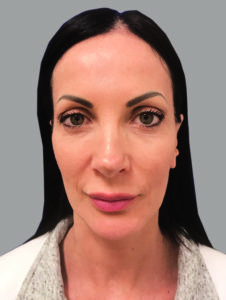
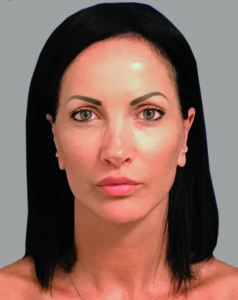
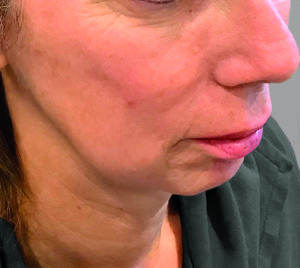
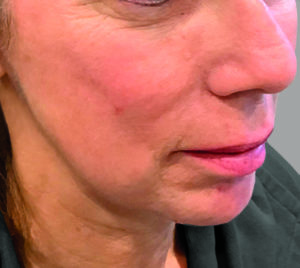
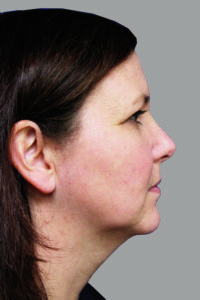
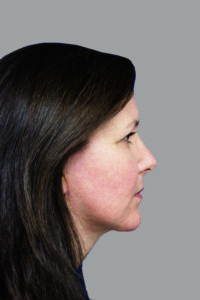
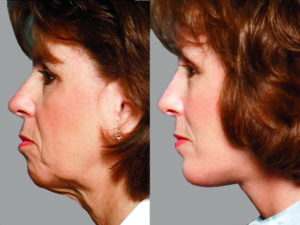

0 Comments